FCAT Wallet User Guide
Getting Started
Welcome to the FCAT Wallet Beta Experience! Here is some key information to get you started:
Accessing the App
As this is a beta experience, you will have to use either TestFlight if you have an Apple device or Google Play Store if you have an Android device.
To actively participate in this beta, you need access to the email address associated with your Apple App Store or Google Play Store. Currently, the invite has been sent to the email you used to sign up for the waitlist. If that is not the email that is registered to your App Store of choosing, please reach out to fcatwallet@fmr.com with the correct email.
For Apple device users: you should have received an email that looks like this:
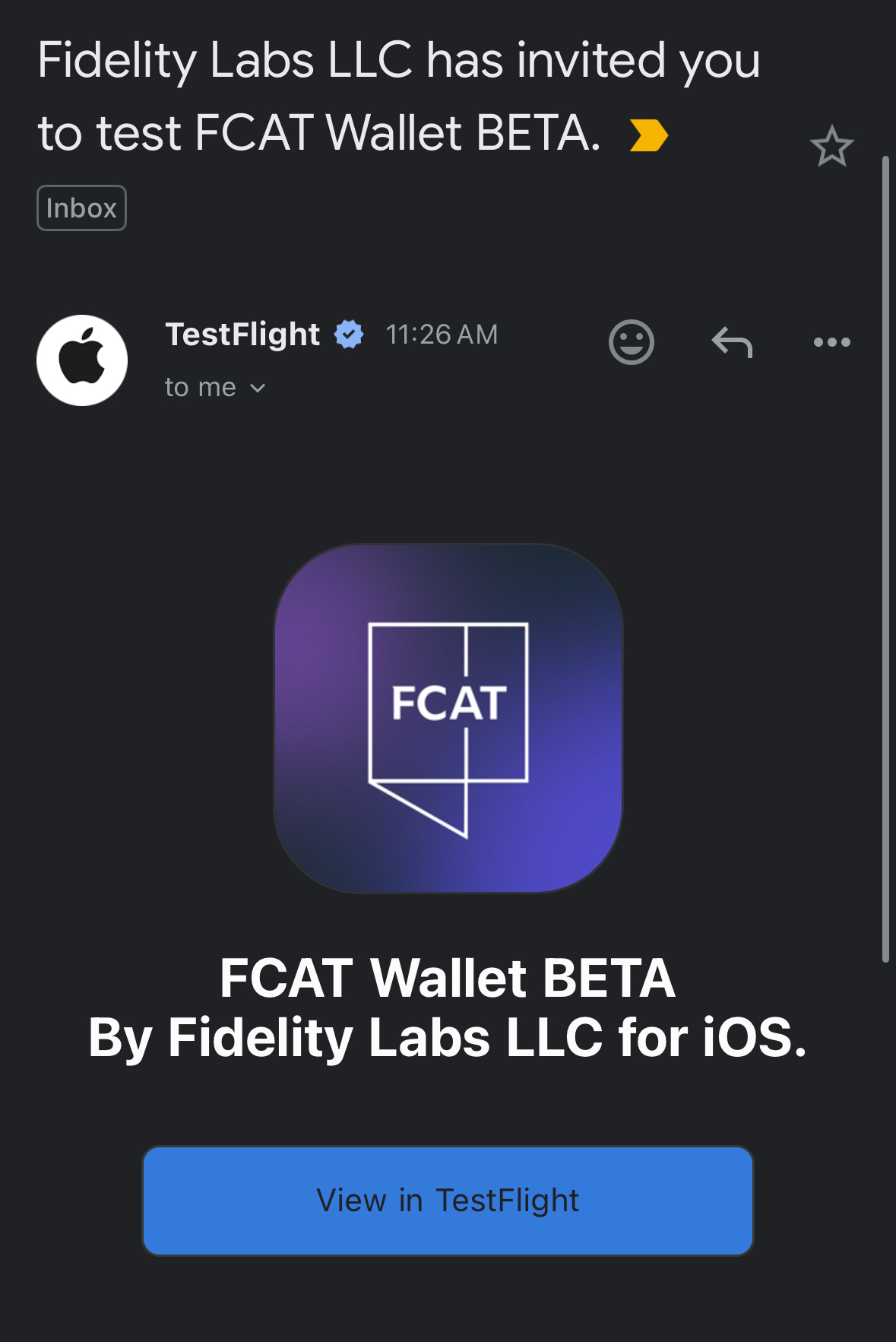
If you click the “View in TestFlight” button, you will be directed to the TestFlight app.
Once the TestFlight app is downloaded, you will see the option to install the FCAT Wallet Beta Experience app. Once downloaded, it will look like this:
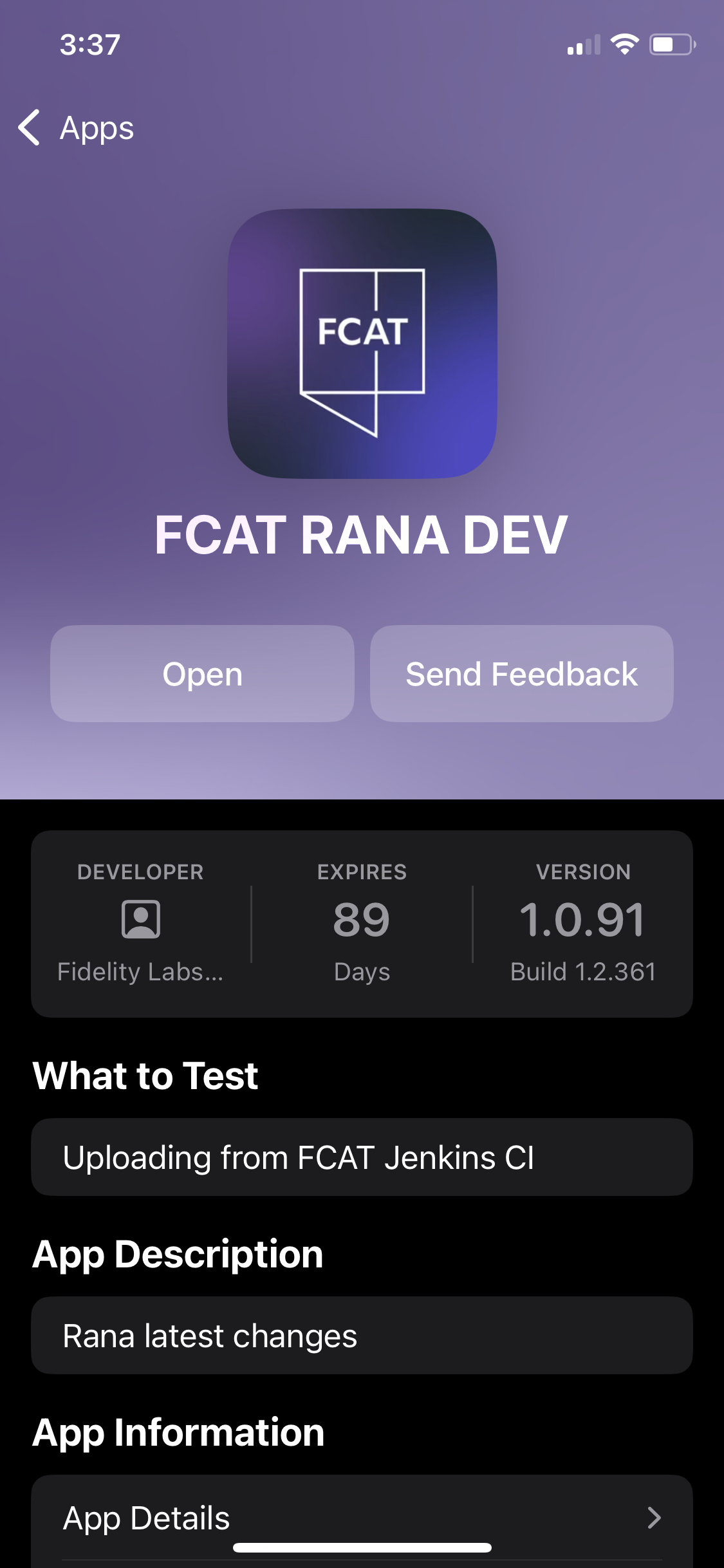
If you have any issues regarding the TestFlight set up, please reach out to fcatwallet@fmr.com.
For Android device users: you will receive a direct link to download the app via the Google Play Store. Please look out for an email from fcatwallet@fmr.com.
Sharing Feedback
To share any feedback or comments, please reach out to us via email at fcatwallet@fmr.com.
Gentle Reminders
Please be advised that:
- We recommend making a traditional backup of your wallets.
- This is a beta experience to test the wallet and help shape the user experience so please limit the value transferred to your wallet to less than $100 USD
- If you would rather transfer with testnet, here are some third-party faucets for your consideration:
Bitcoin
Ethereum:
Sepolia
-
USDC:
Sepolia
If you have any questions at any time, please reach out to fcatwallet@fmr.com.
Wallet Onboarding
Once you have the TestFlight app downloaded and the FCAT Wallet app installed, you can begin onboarding.
Creating a Passcode
First, you will be asked to create a 6-digit passcode you will use to log into the Wallet.
Please note: FCAT cannot recover the passcode for the user.
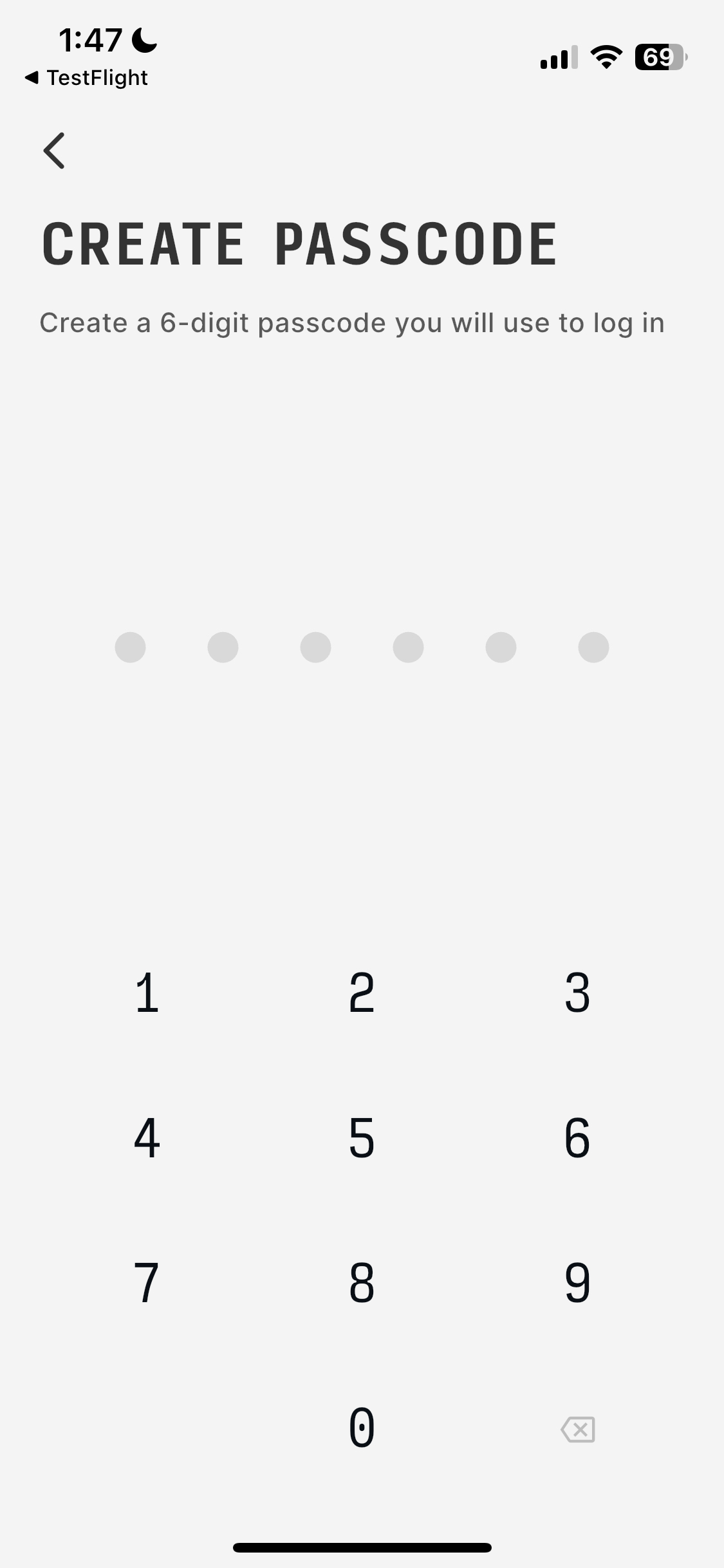
Optional Face ID
Once you create and confirm your 6-digit passcode, you have the option to additionally secure your account by enabling Face ID.
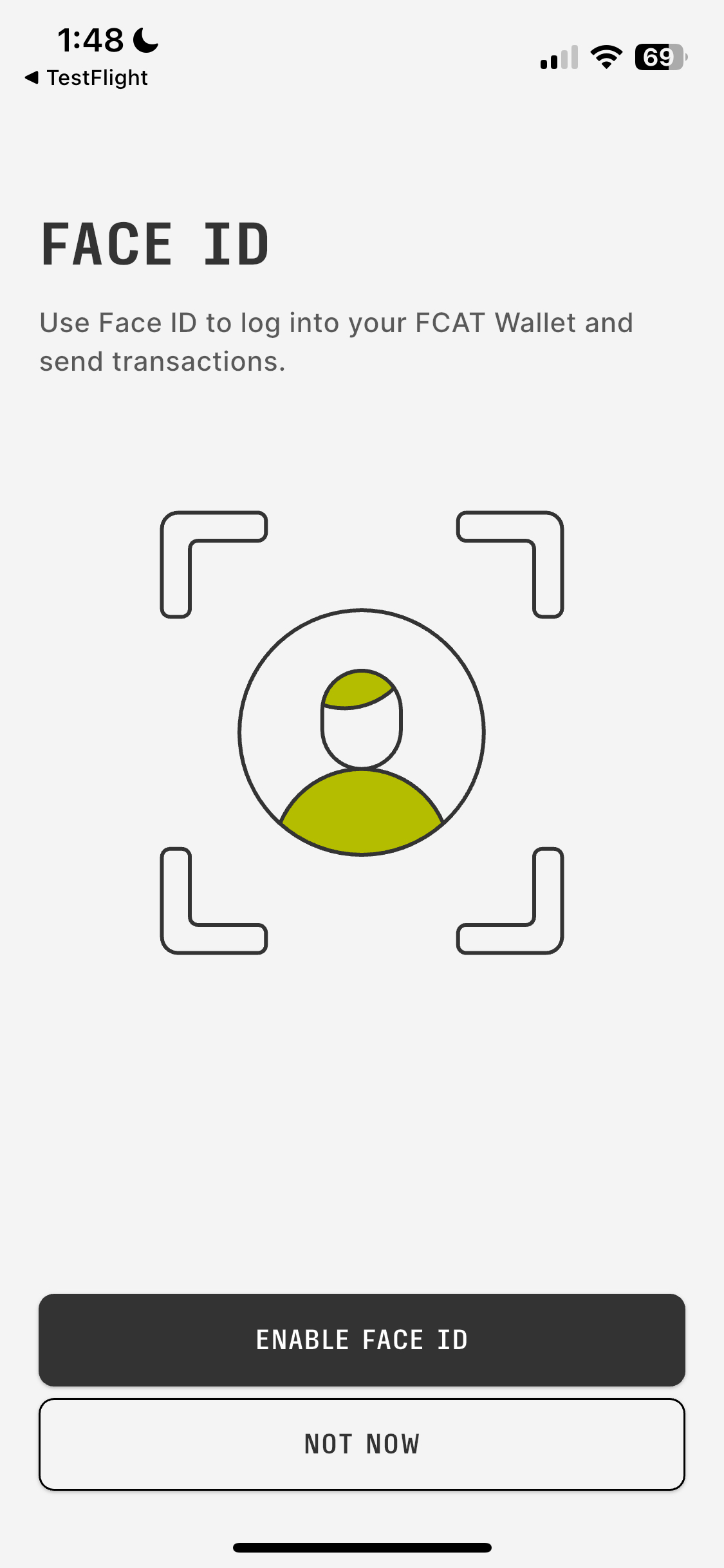
Once you have created a passcode, you are ready to begin Creating a Wallet or Importing a Wallet.
Creating a Wallet
One way to get started is to Create a Wallet.
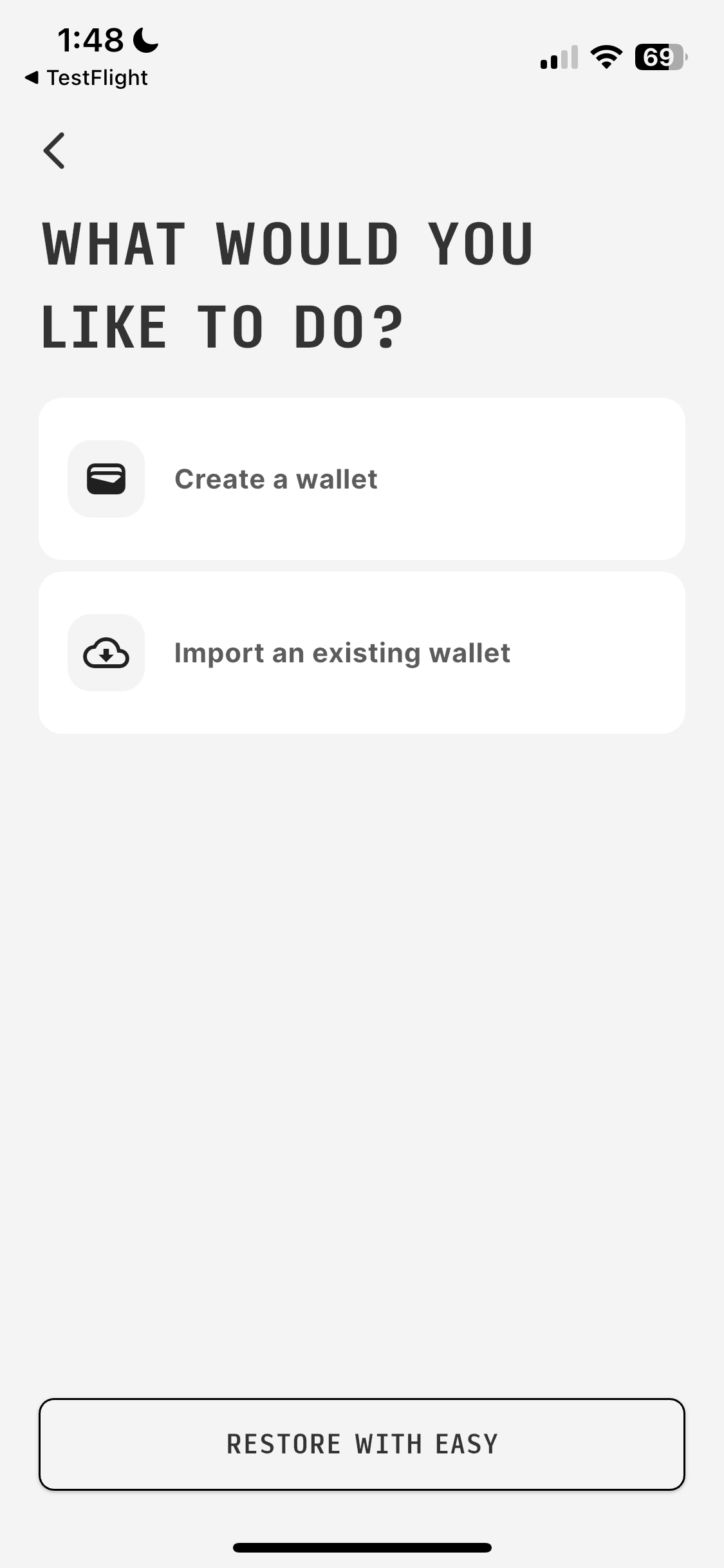
Once you click the ‘Create a Wallet’ button and receive confirmation that your wallet has been created, you will be prompted to either Make a Backup or to Explore the Wallet. You can Make a Backup by either using the proprietary EASY Key Recovery or making a Traditional Backup.
Please note: if you do not have a traditional backup and do not sign up for EASY Key Recovery, there is no way to recover your wallet if you lose access to your app
Importing a Wallet
One way to get started is to Import an Existing Wallet.
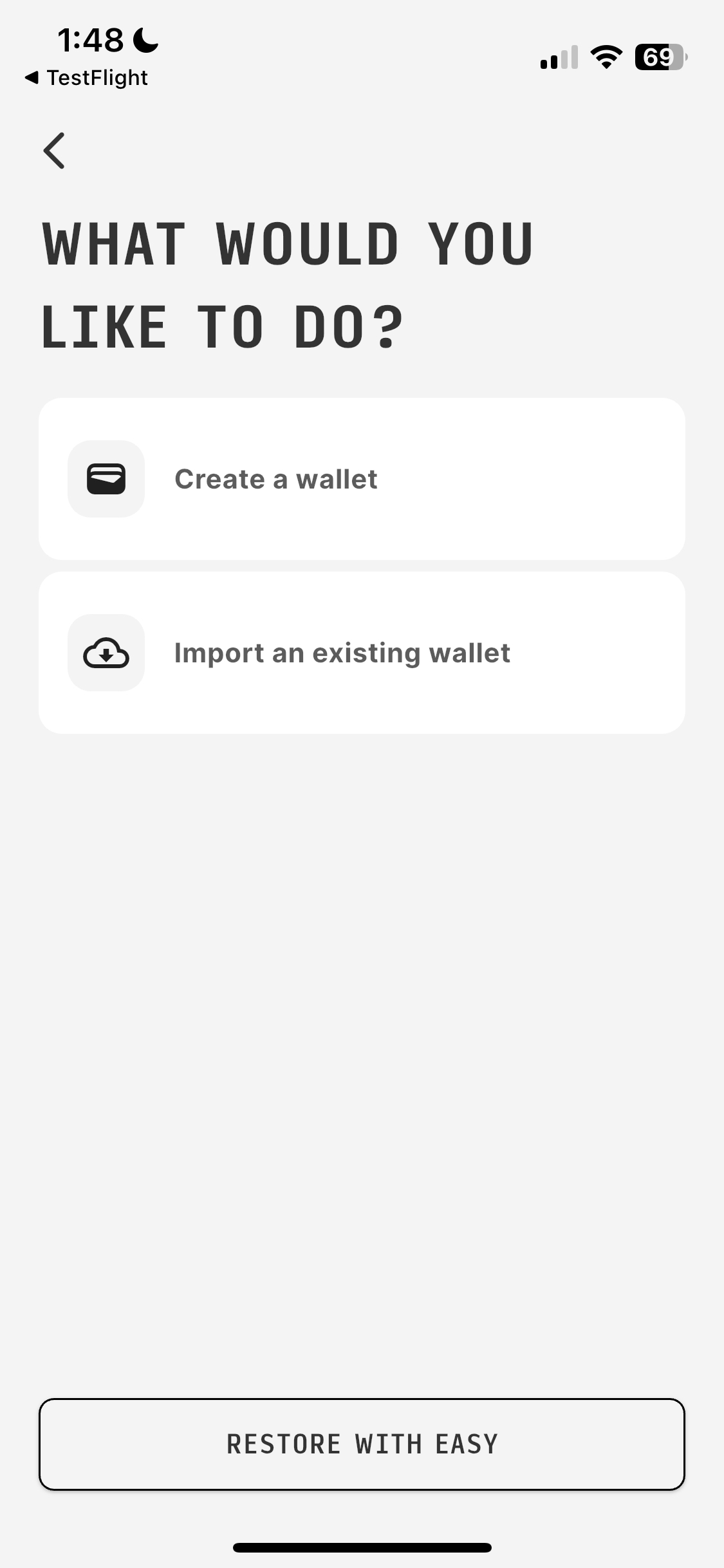
You can do so by entering the 12-word or 24-word seed phrase
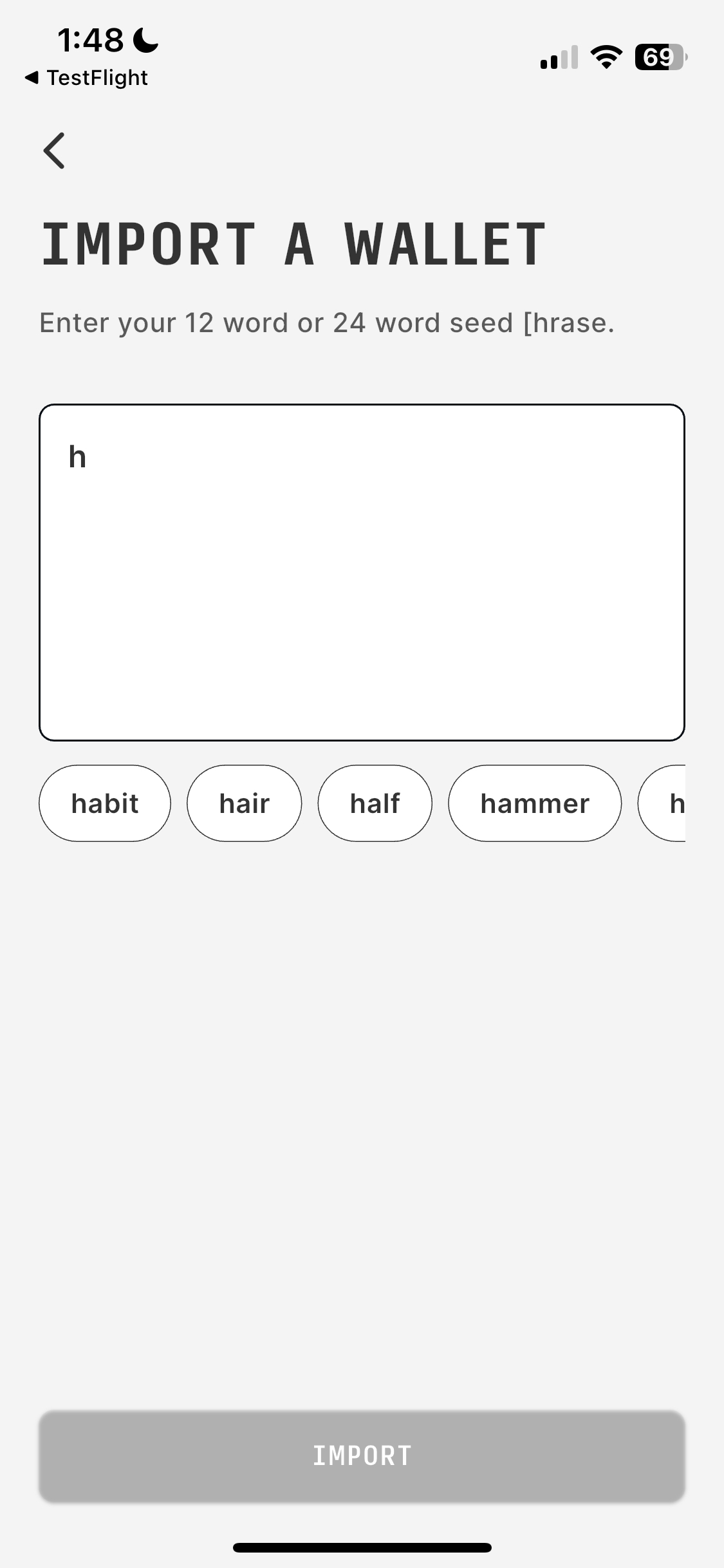
Once you have entered all your words and imported an existing wallet, you can either Explore the wallet or set up EASY Recovery for this wallet.
Making a Wallet Backup
You can Make a Wallet Backup by using the proprietary EASY Key Recovery and/or making a Traditional Backup. This can be done regardless of if you’re creating a new wallet or importing an existing wallet.
EASY Key Recovery
FCAT Wallet can help address single-point-of-failure risk, while allowing users to maintain sole custody of their private keys through our proprietary EASY Key Recovery (EASY - Encrypted, Accessible, Secure, Yours).
EASY Key Recovery is a tiered recovery method. You start by creating an EASY Key Recovery account by linking it to the email used to access this app.
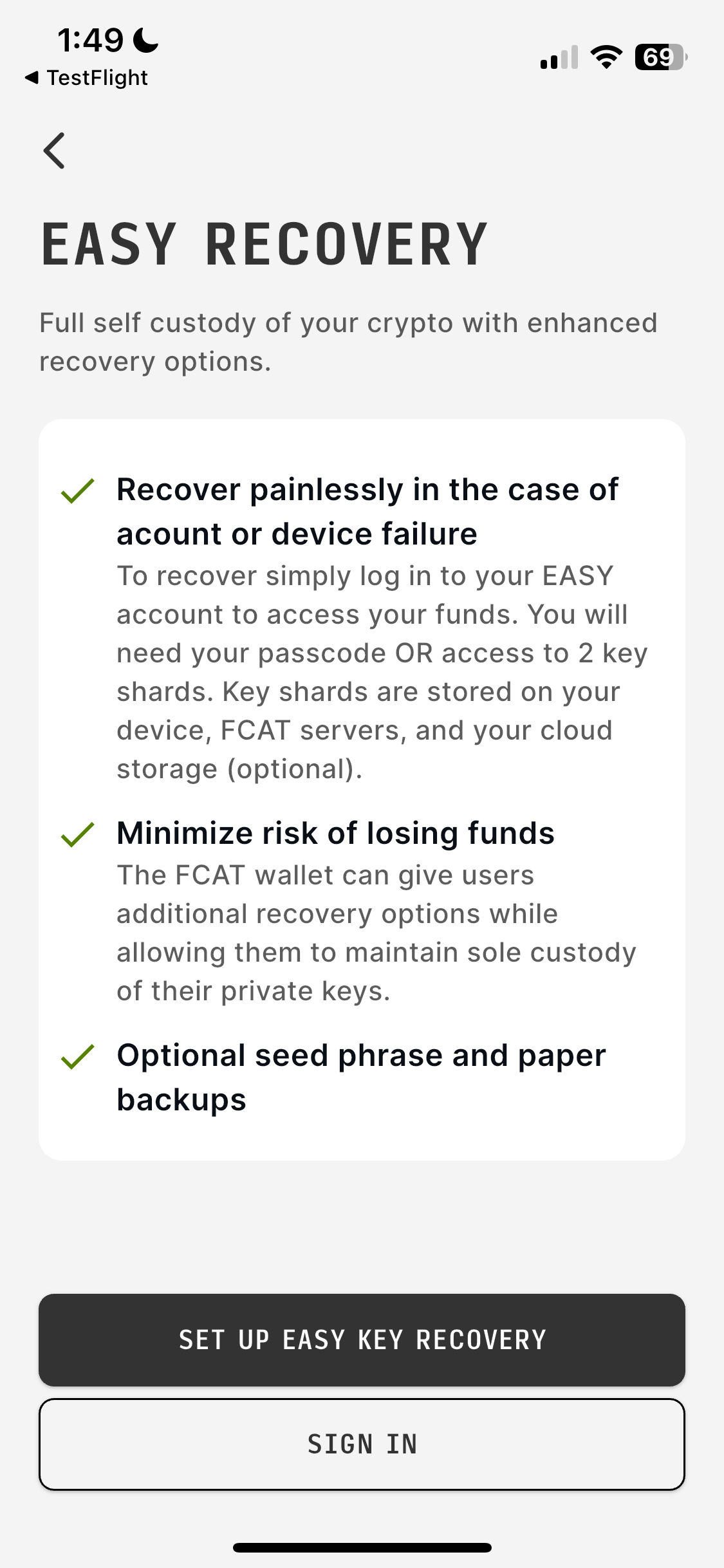
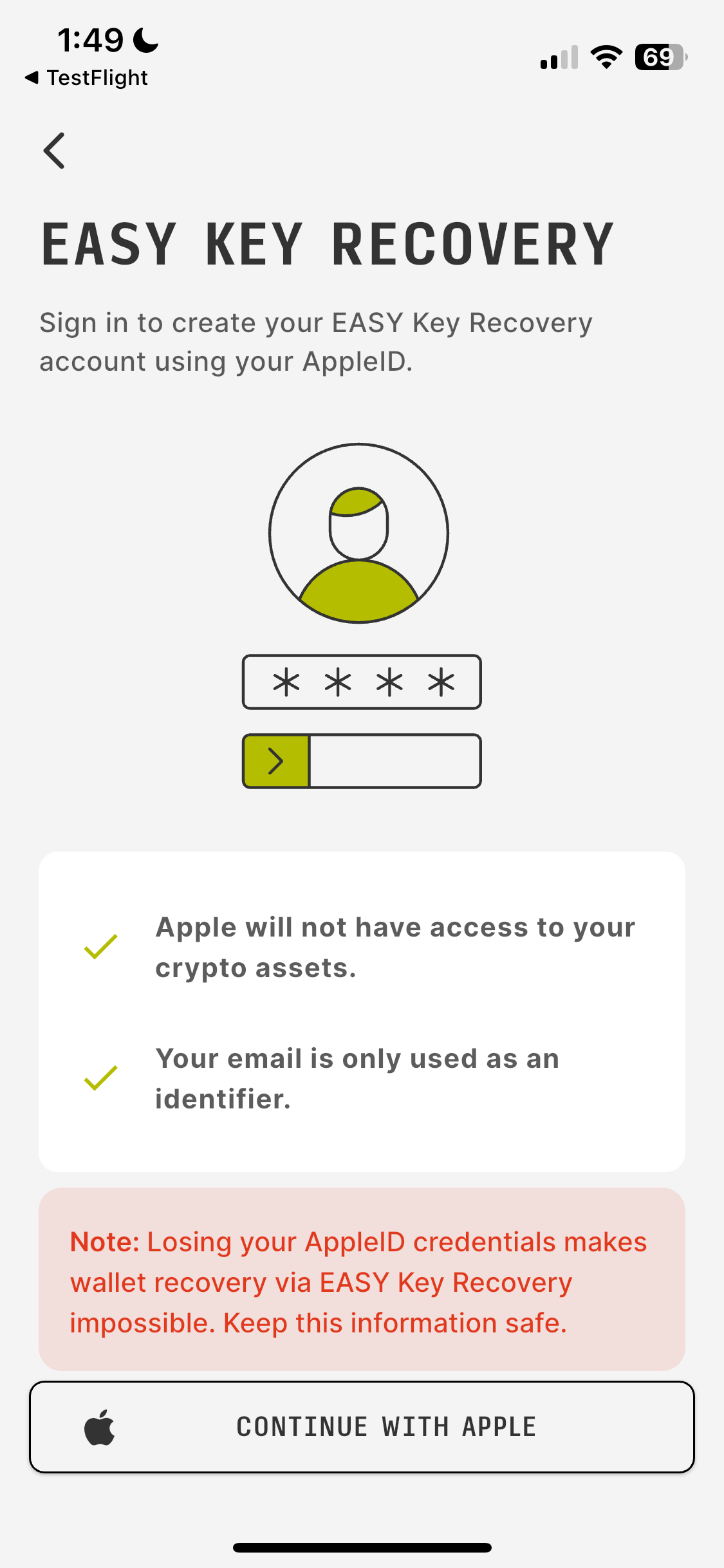
Next, you will be asked to create a Password. The password should be at least 12 characters, with at least one upper and one lowercase letter, at least one number, and at least one special character.
Once you have created and confirmed your EASY Key Recovery password, you have successfully signed up for EASY Key Recovery! This means that encrypted shards are created and stored on: an FCAT server (this shard can only be decrypted by the user), your current device, and a final optional shard that you can choose to be stored on your cloud-based storage provider (e.g., iCloud or Google Drive). You can make this choice on Setup page:
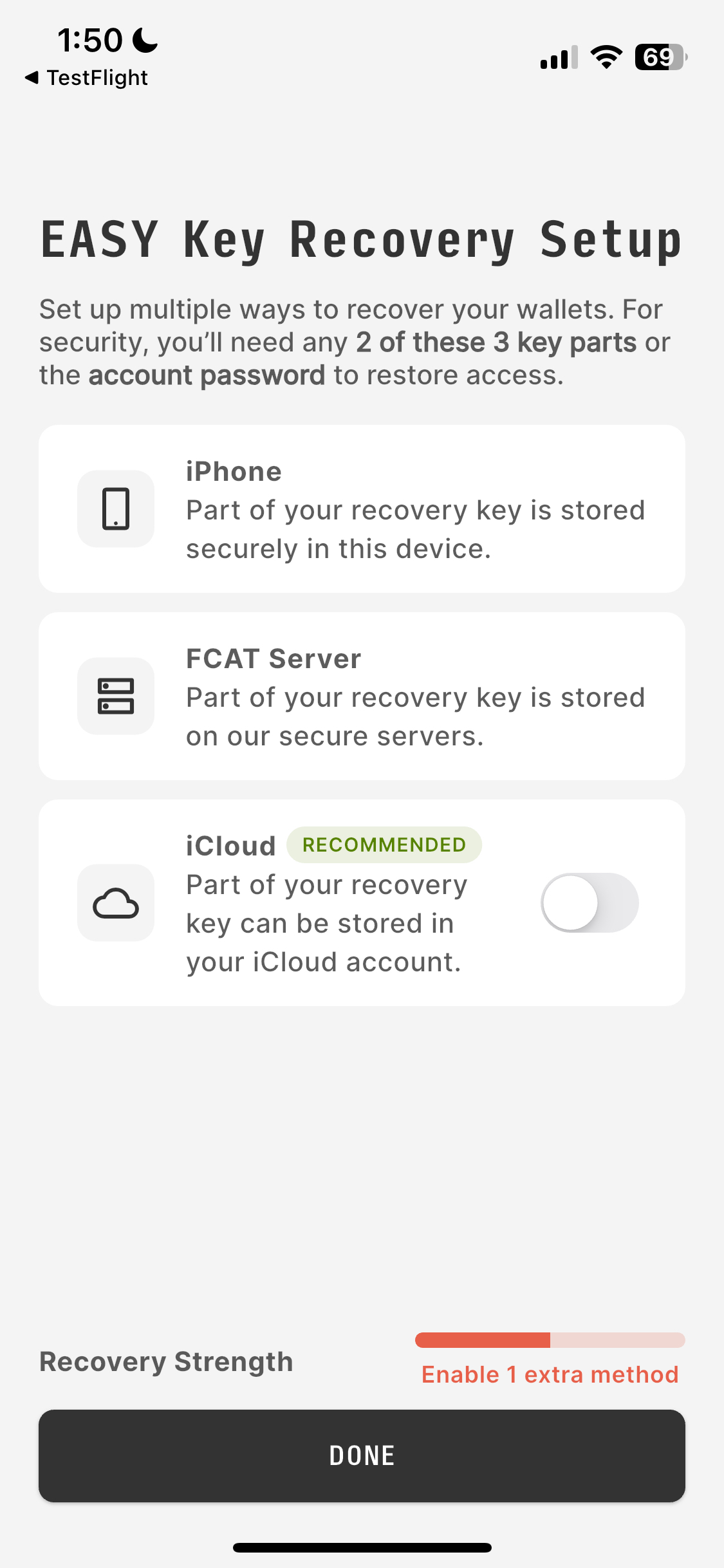
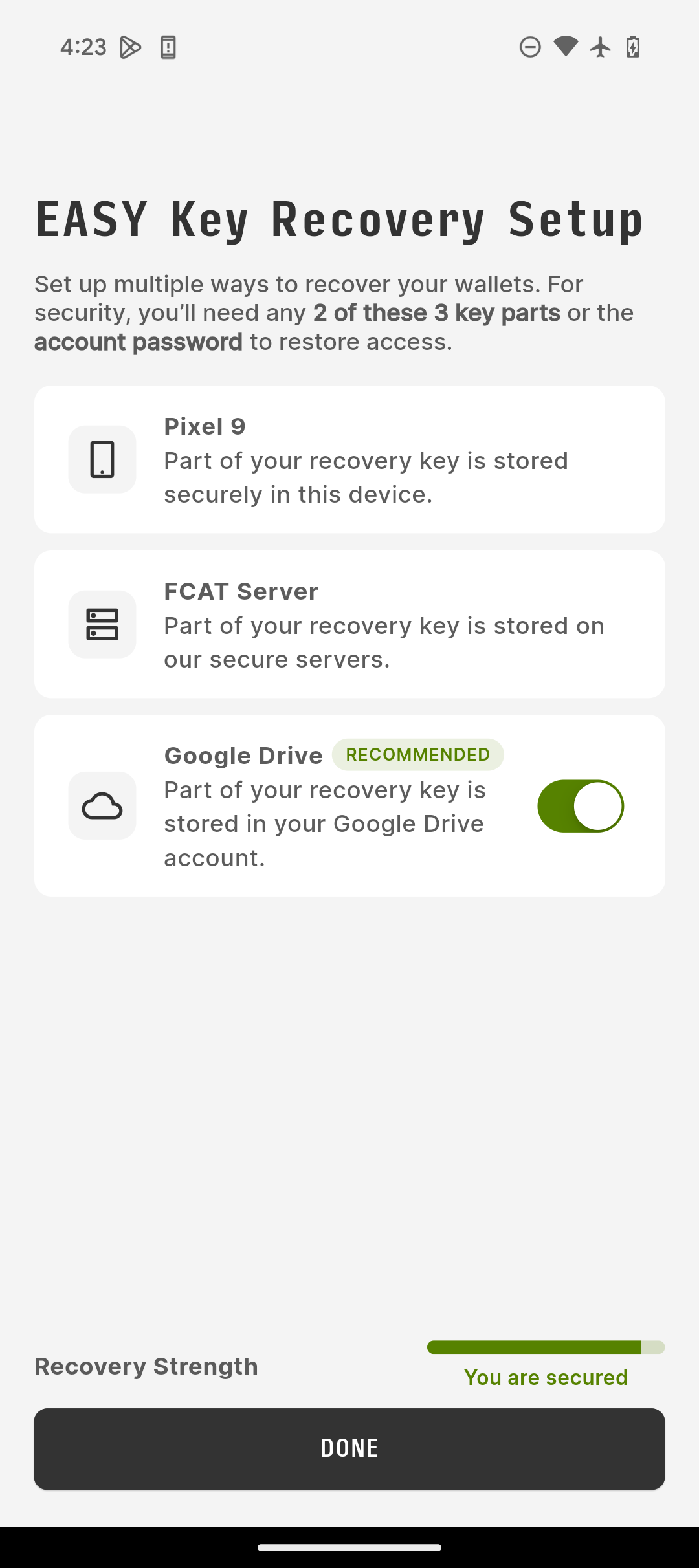
EASY Key Recovery - iPhone (figure on left), EASY Key Recovery - Android (figure on right)
Please note: you need access to (i) your EASY Key Recovery password or (ii) two out of three shards to be able to recover wallet data using EASY Key Recovery. If you do not remember your password and do not have access to two of three shards, the FCAT Wallet team cannot support wallet recovery. In addition, you must authenticate with your third-party platform credentials (e.g., your Apple ID or Google account) to recover wallet data using EASY Key Recovery.
Additional note for Android device holders: because of the setup of Android devices, resetting your access to the app could lead to the deletion of crucial EASY Key Recovery data and make it difficult to support wallet recovery.
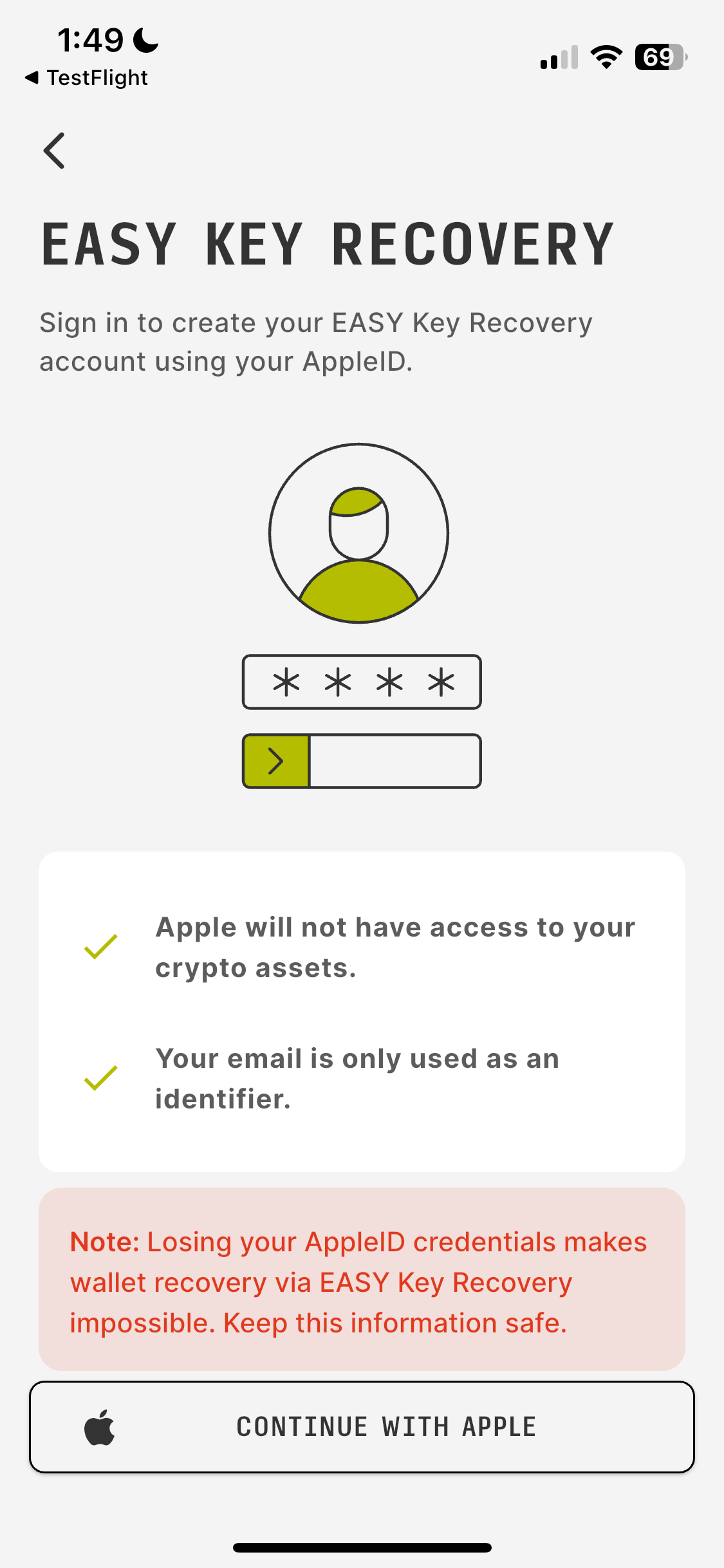 ⮕
⮕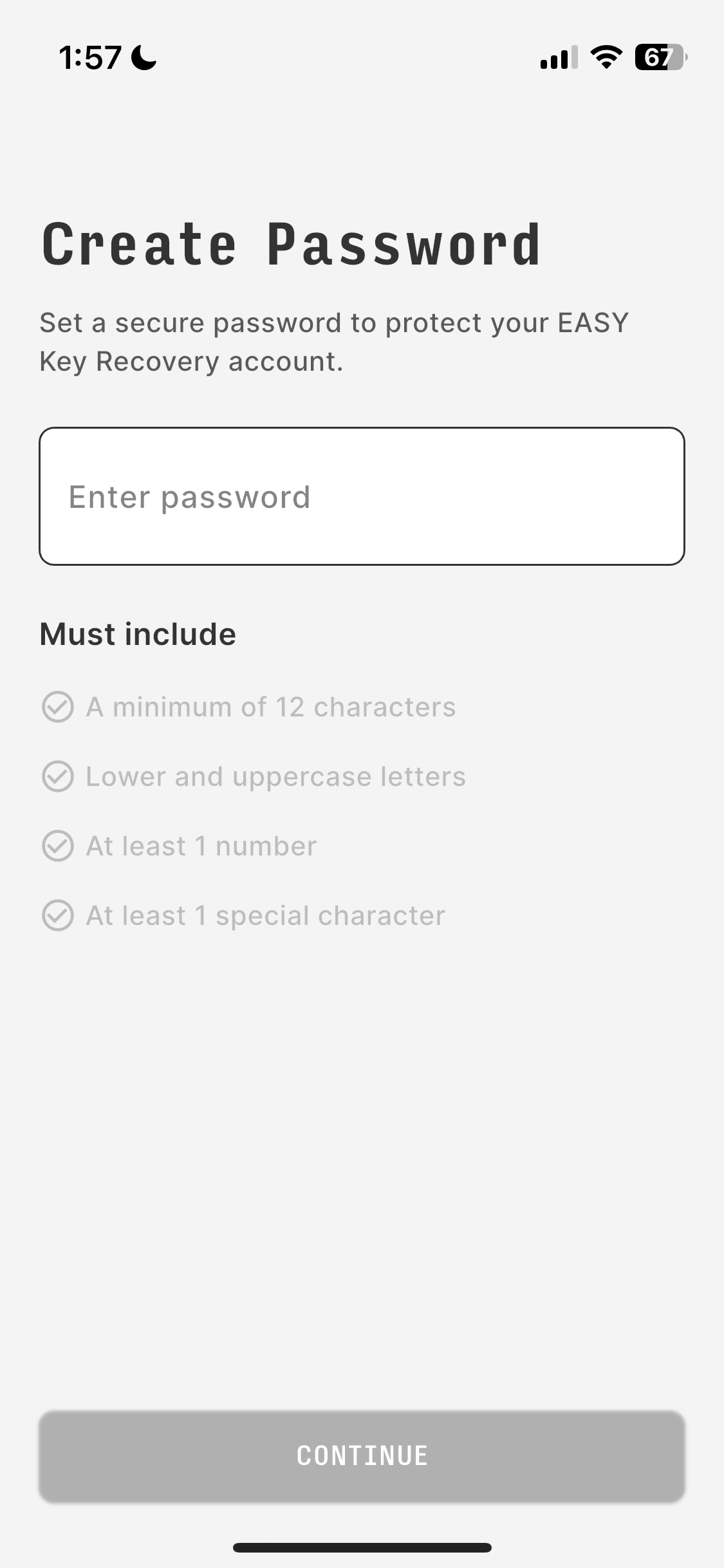
Once this step is complete, one shard will be stored on your device and one shard will be stored on the FCAT Server. You are then presented with the option to store a third shard with your Apple or Google Cloud provider.
Please note: when not stored with a cloud provider, the cloud shard is encrypted and can only be decrypted by the user with your EASY Key Recovery password.
Traditional Backup
Regardless of if you sign up for EASY Key Recovery, we advise creating Traditional Backup for each wallet. Once you accept the Terms of Service, you will be presented with your 24-word phrase:
Write down or copy the words in the right order and store them somewhere safe. You are then asked to re-enter the words in the correct order to verify your secret phrase.
Please note: FCAT will never ask for your seed phrase and be aware that sharing of this information will give full access to your assets.
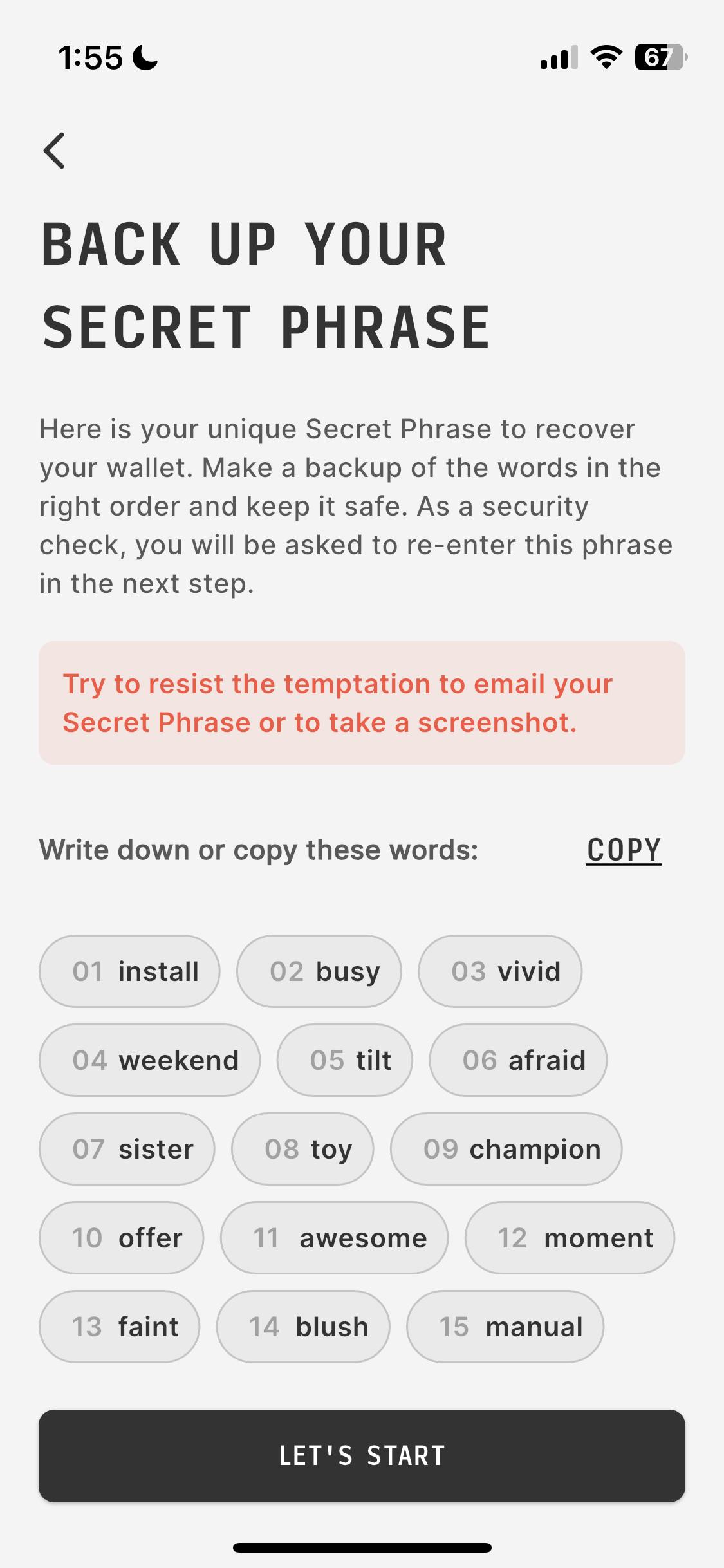
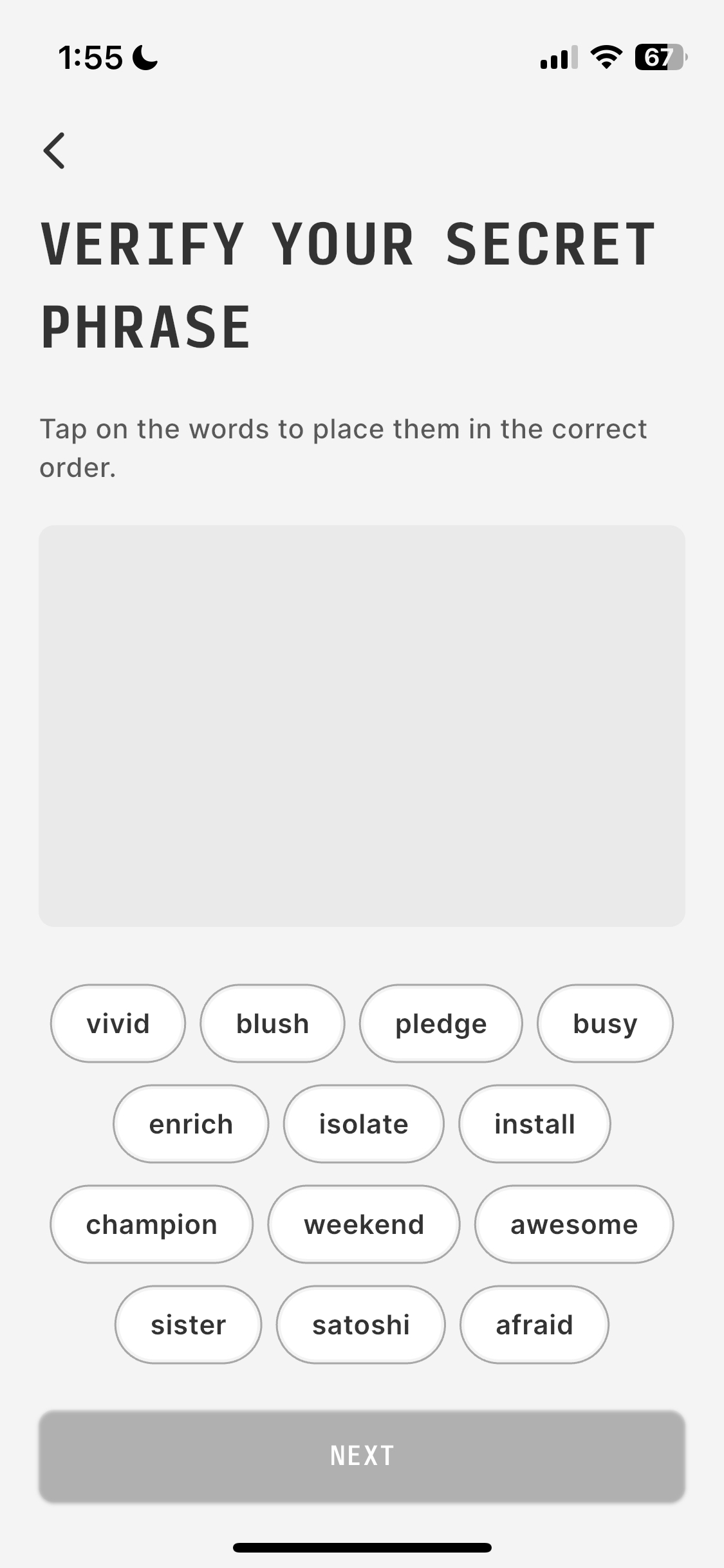
Making a Traditional Backup for an Existing Wallet
Once your wallet has been created, you can make a traditional backup and locate your secret phrase by tapping Settings located at the top right-hand side of the app
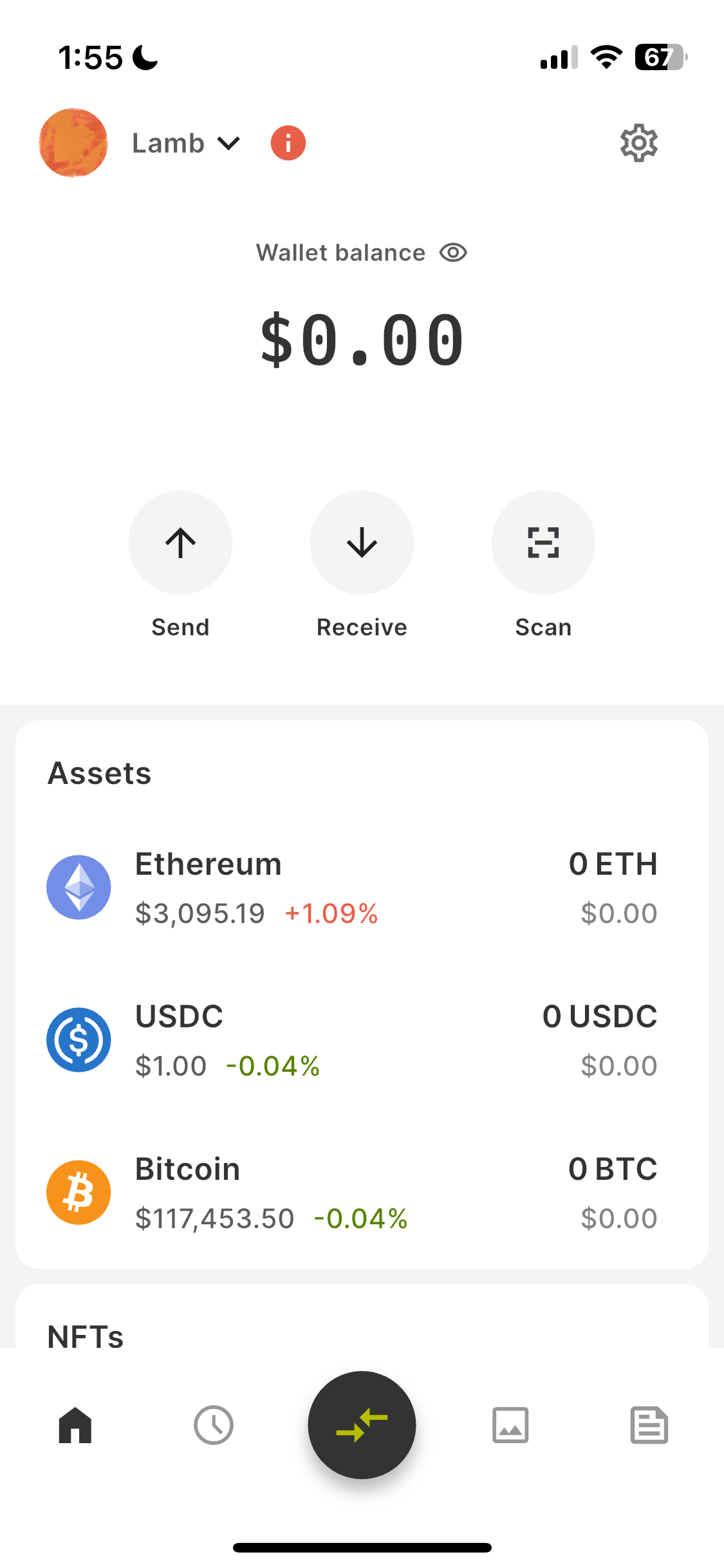
Locate and tap Manage Wallets, followed by tapping your wallet name and finally tapping Make a traditional backup will bring you to your Secret Phrase
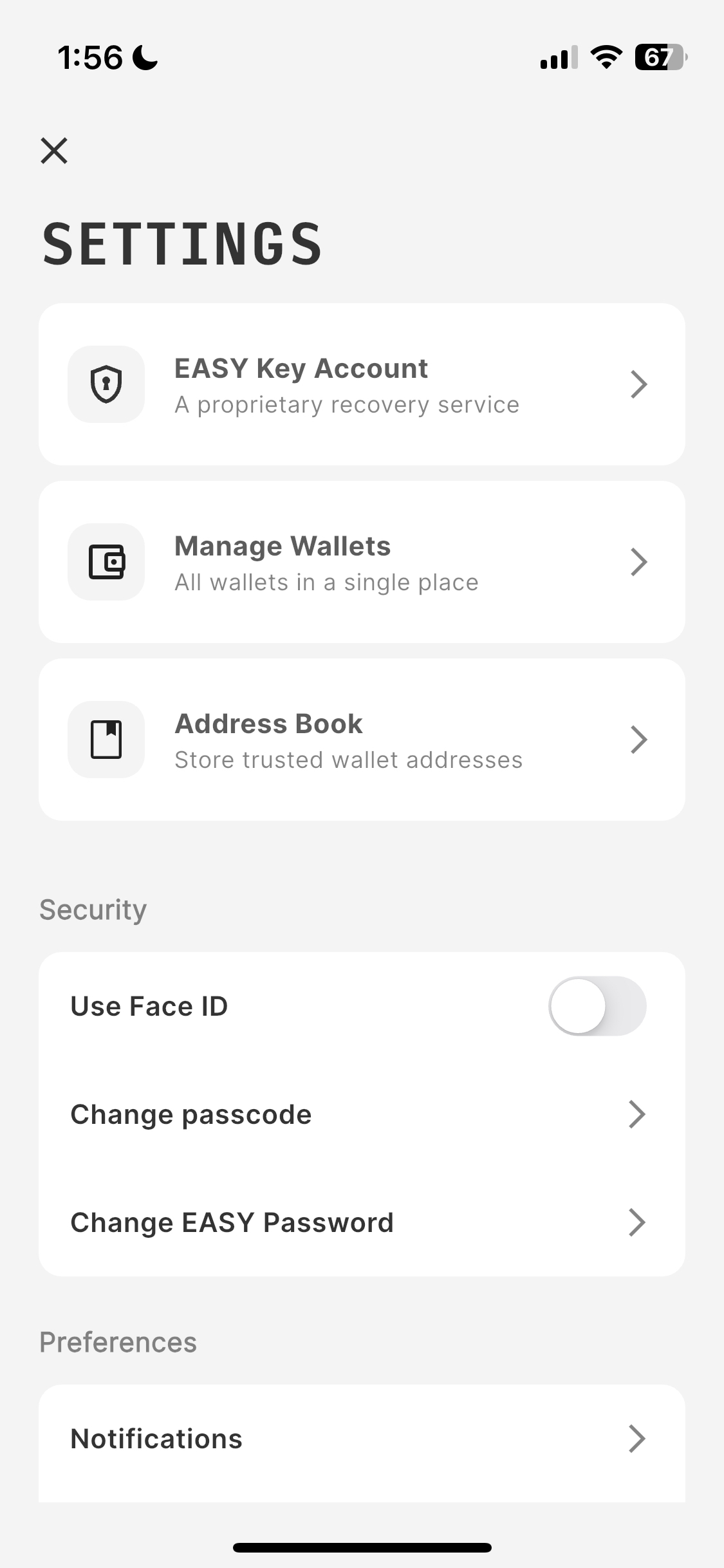 ⮕
⮕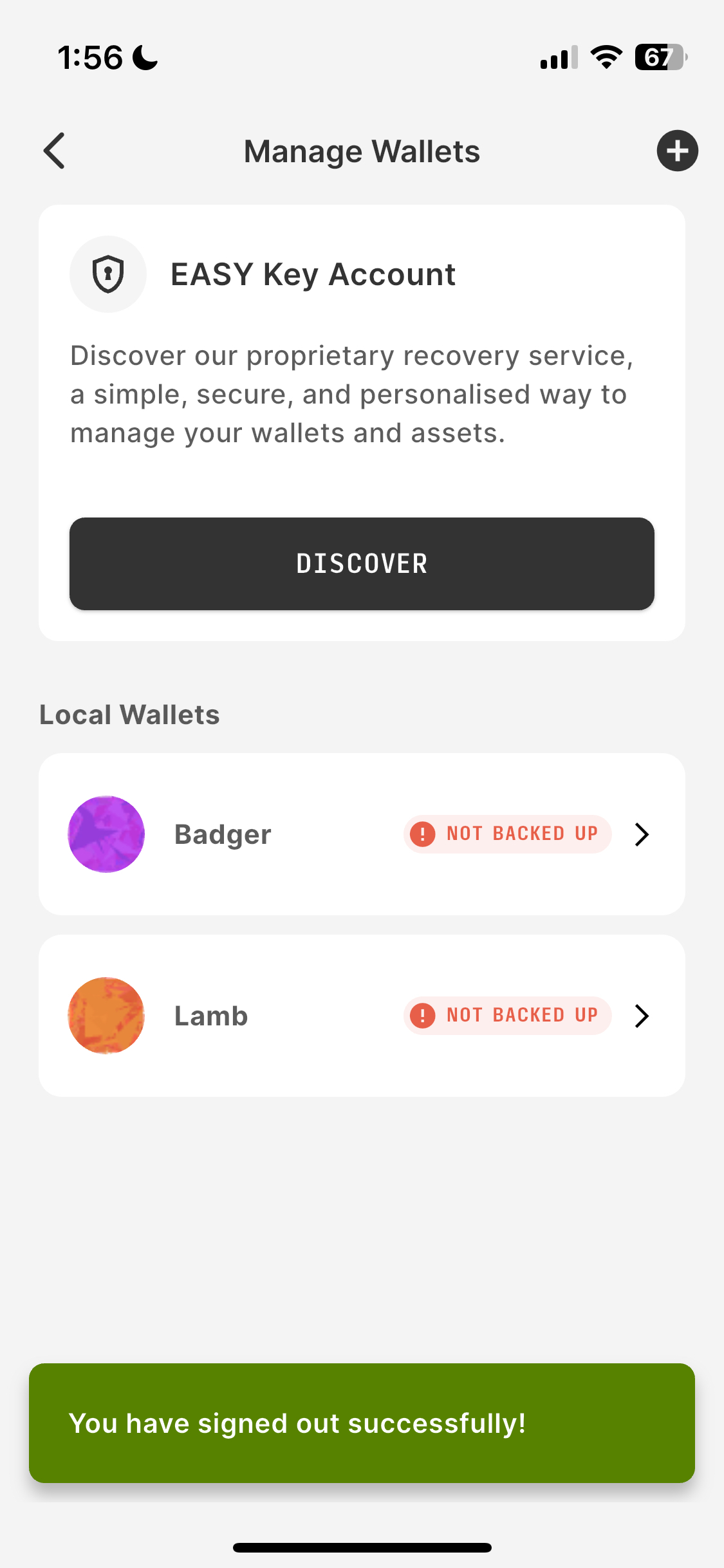 ⮕
⮕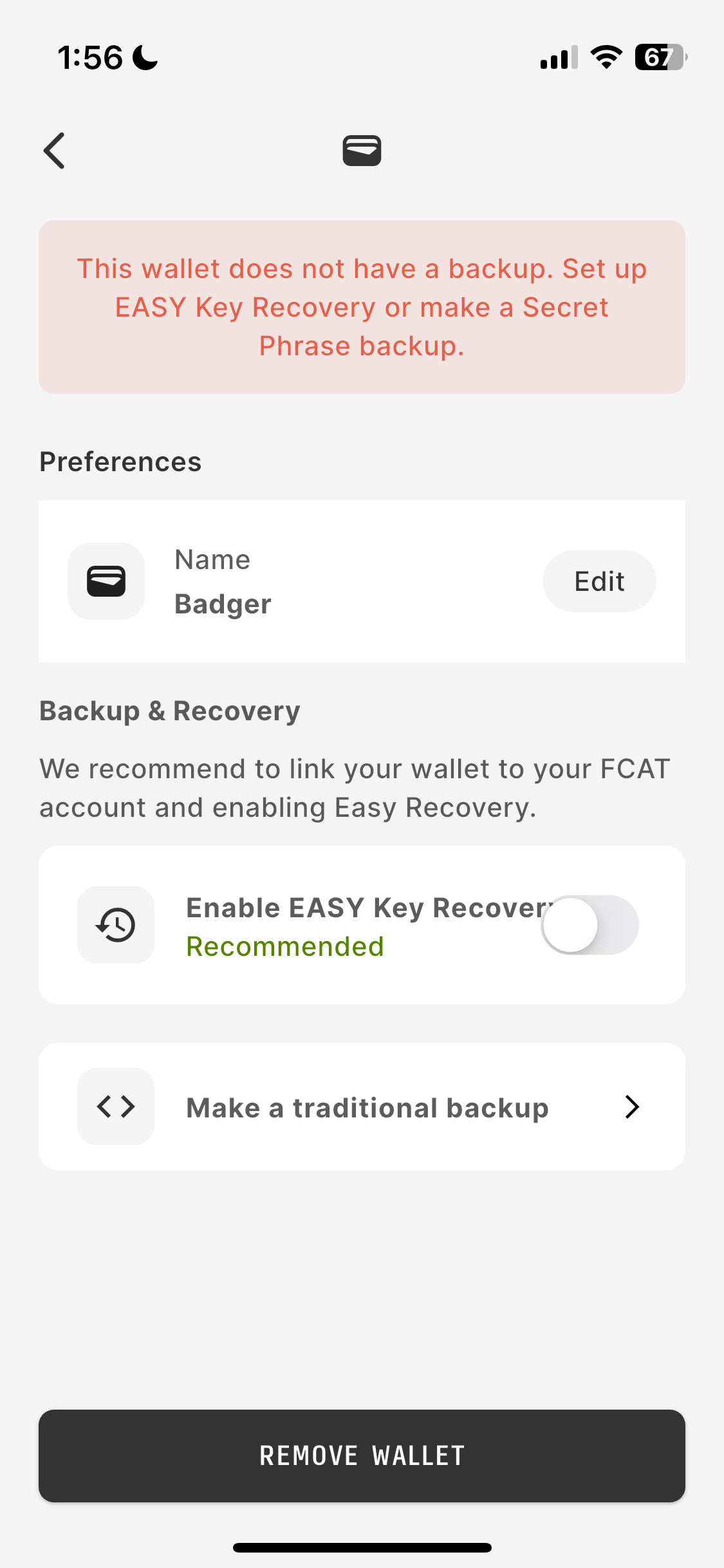
Frequently Asked Questions
What should I consider before choosing self-custody?
Before choosing self-custody, consider the risks and responsibility. Managing your private keys is crucial; losing them can mean losing access to your funds permanently. Assess your ability to securely store and back up these keys, using tools like hardware wallets for added security. Also, consider the balance between security and convenience; while hardware wallets offer more robust security, hot wallets are more convenient for frequent transactions but are more susceptible to online threats. Finally, evaluate your technical proficiency and willingness to learn about security best practices to ensure you can effectively manage and protect your cryptocurrency.
Why can't I see all the assets in my wallet?
Some tokens may not be supported by or may exist on a blockchain network that isn't supported by FCAT Wallet. We currently support Bitcoin, Ethereum, USDC (ERC-20), and testnets. You may be able to see your assets when viewing your account from a third-party block explorer, which can be done from the account page.
Why don’t I see all my wallets or addresses?
If you're importing a wallet that includes multiple sub-accounts for an asset and not all addresses are showing up, you may need to manually add additional accounts. Each time you add an additional account for an asset, the wallet derives the next address along the standard derivation path. If FCAT Wallet uses the same derivation path as your original wallet, your additional addresses and their balances should appear once added.